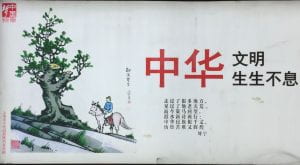Wed, October 30, 2019, 4:30-6pm, CWAC 156 (*please note the different time)
Alice Casalini, PhD student, Department of Art History
“A Preliminary Survey of the Swat Valley and the Taxila Region”
In this talk, the presenter will cover materials from the Buddhist sites that she has personally visited during her recent survey trip in Pakistan. The presenter will focus on the Swat valley and on the region of Taxila, highlighting similarities and differences between the monastic establishments within the two areas, in terms of architecture and layout, visual program, and materiality. The ultimate goal is to draw out diagnostic features that would allow the identification of typologies of monastic establishments. Great emphasis will be given to spatial relationships among the different locales within monastic complexes and to the bodily experience of movement within such spaces, but also to locality and positionality within the broader geographical settings of Swat and Taxila.
Alice’s photo from the summer fieldtrip, 2019
Persons with concerns regarding accessibility please contact Zhenru Zhou (zhenru@zhenruzhou.com) and Yin Wu (yinwu@uchicago.edu).
++++++++++++++++++++++++++++
Alice Casalini received her BA and MA in Language and Civilisation of Asia and Mediterranean Africa from Ca’ Foscari University of Venice. During her MA, she spent a total of four terms as an exchange student at the department of Archaeology and Museology of Peking University, where she specialized in Buddhist archaeology of Xinjiang. Her MA thesis focused on the Buddhist caves of the kingdom of Kucha. Her current interests lie in early Buddhist art and architecture of Gandhāra and Northern India.



